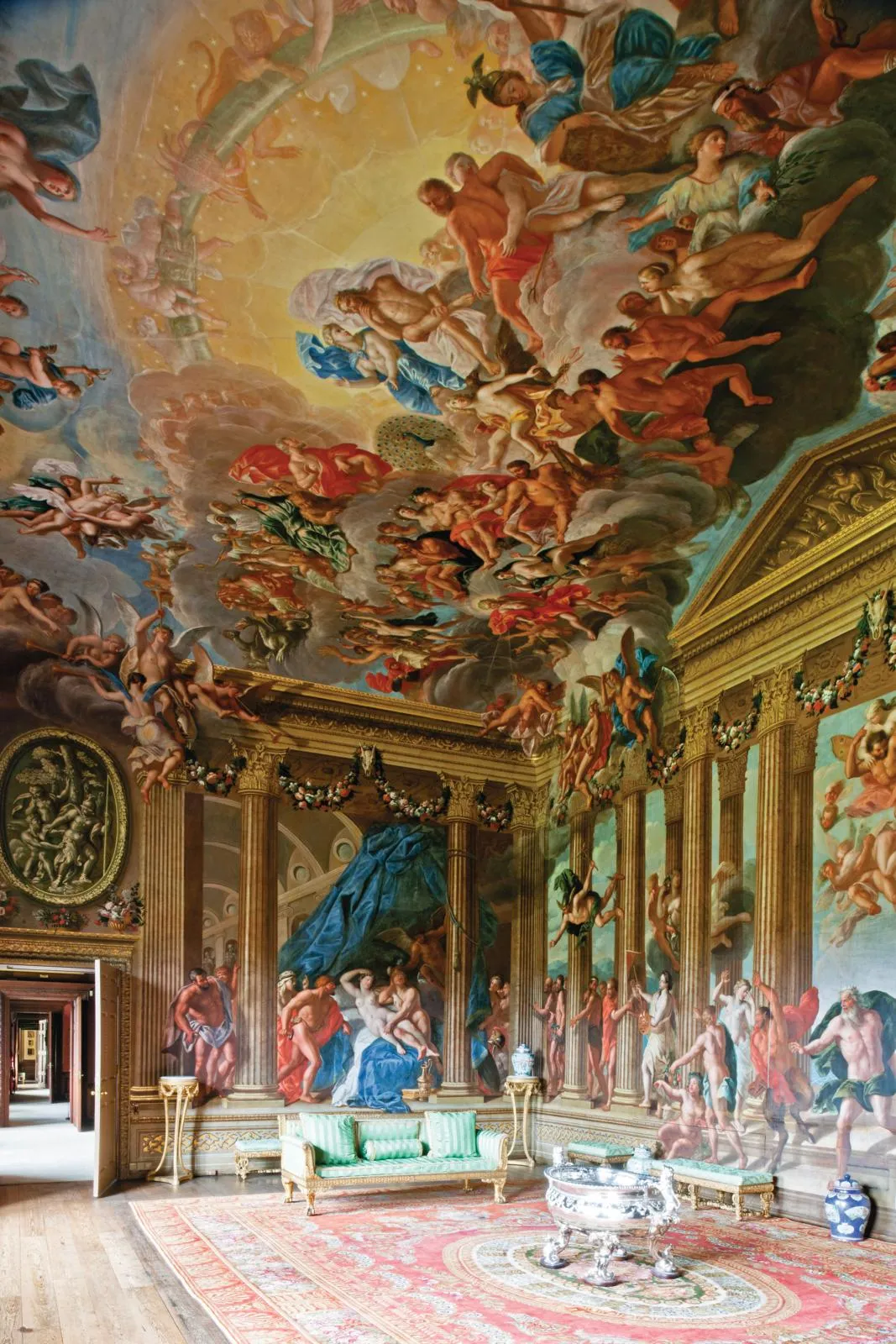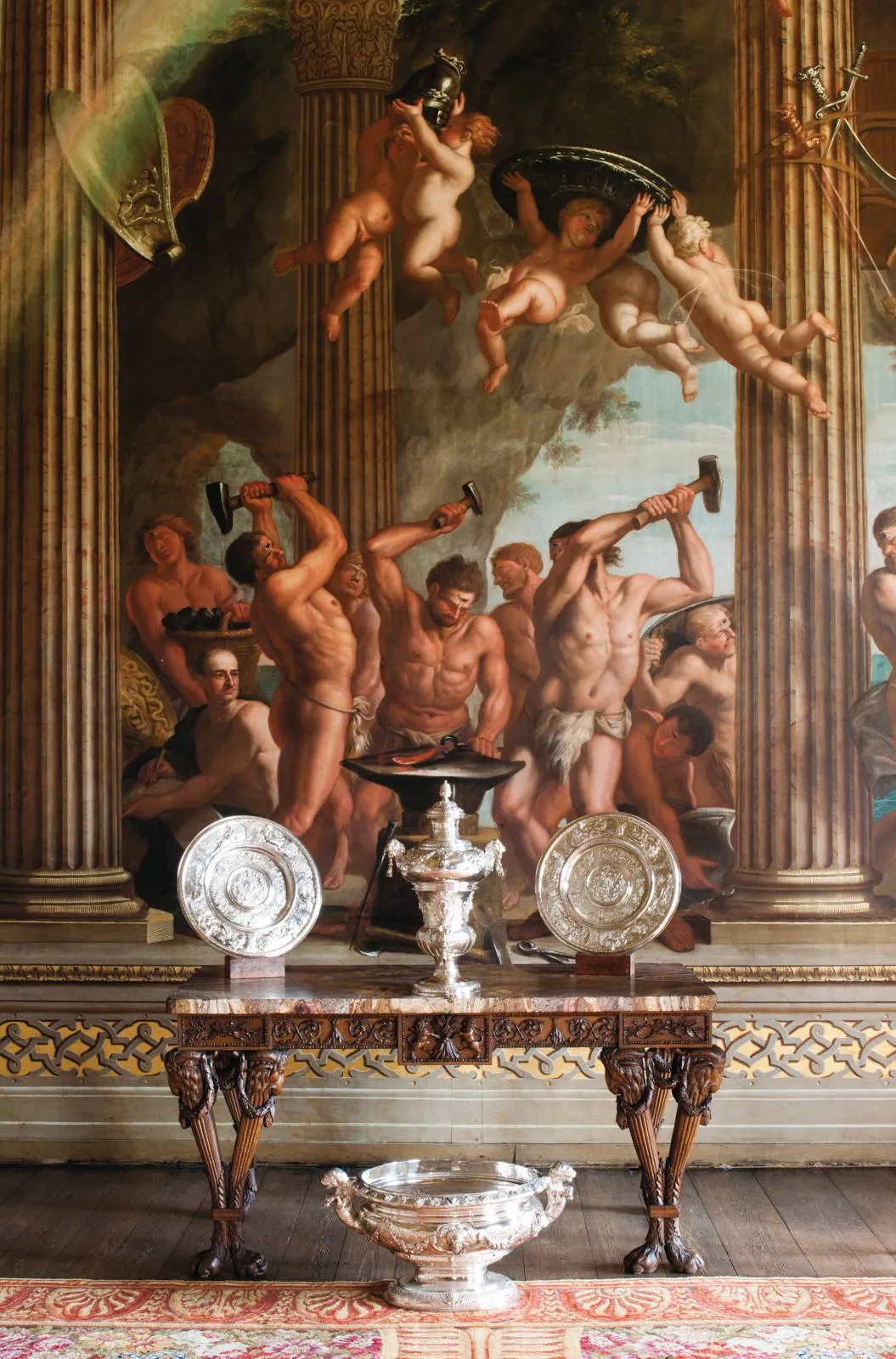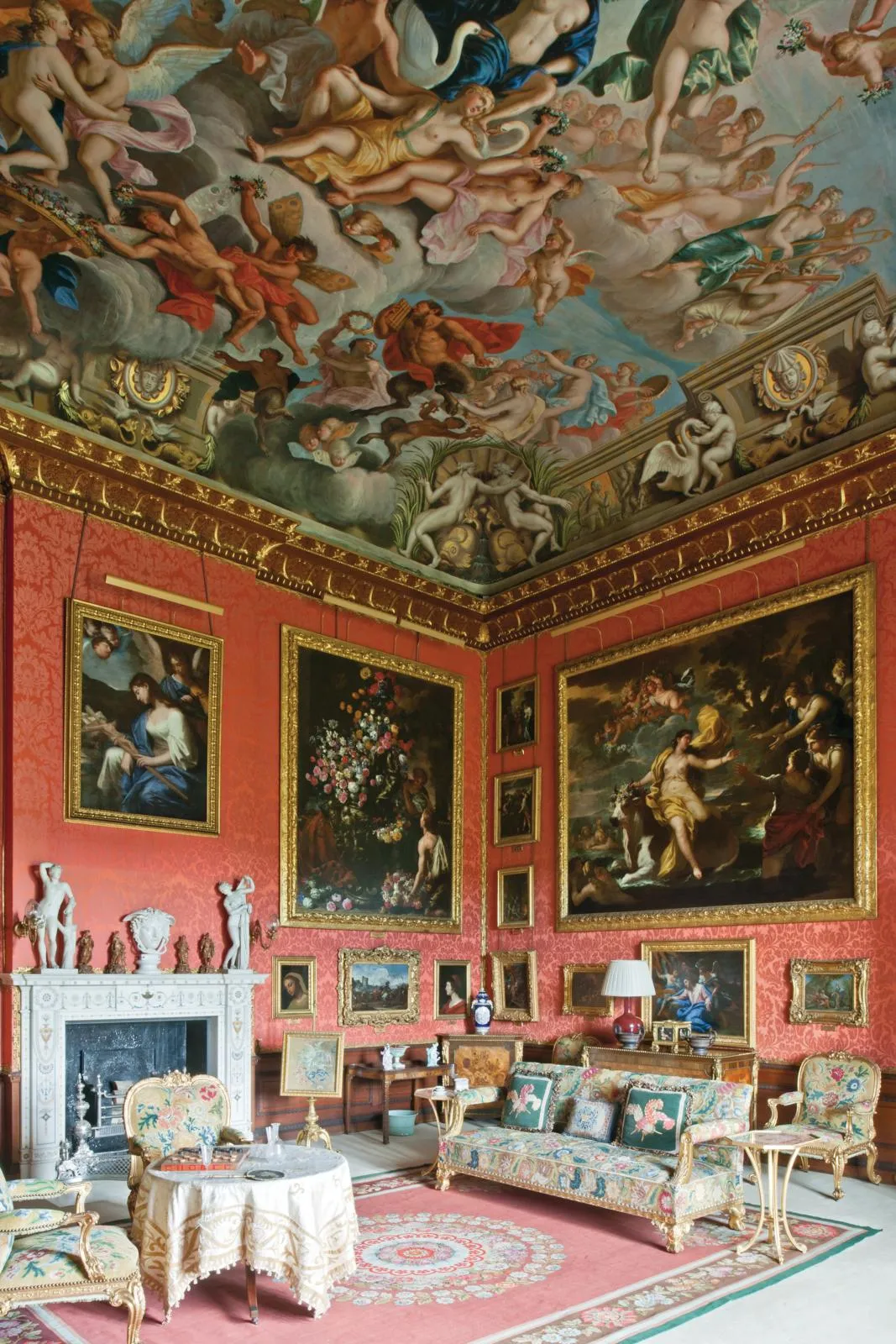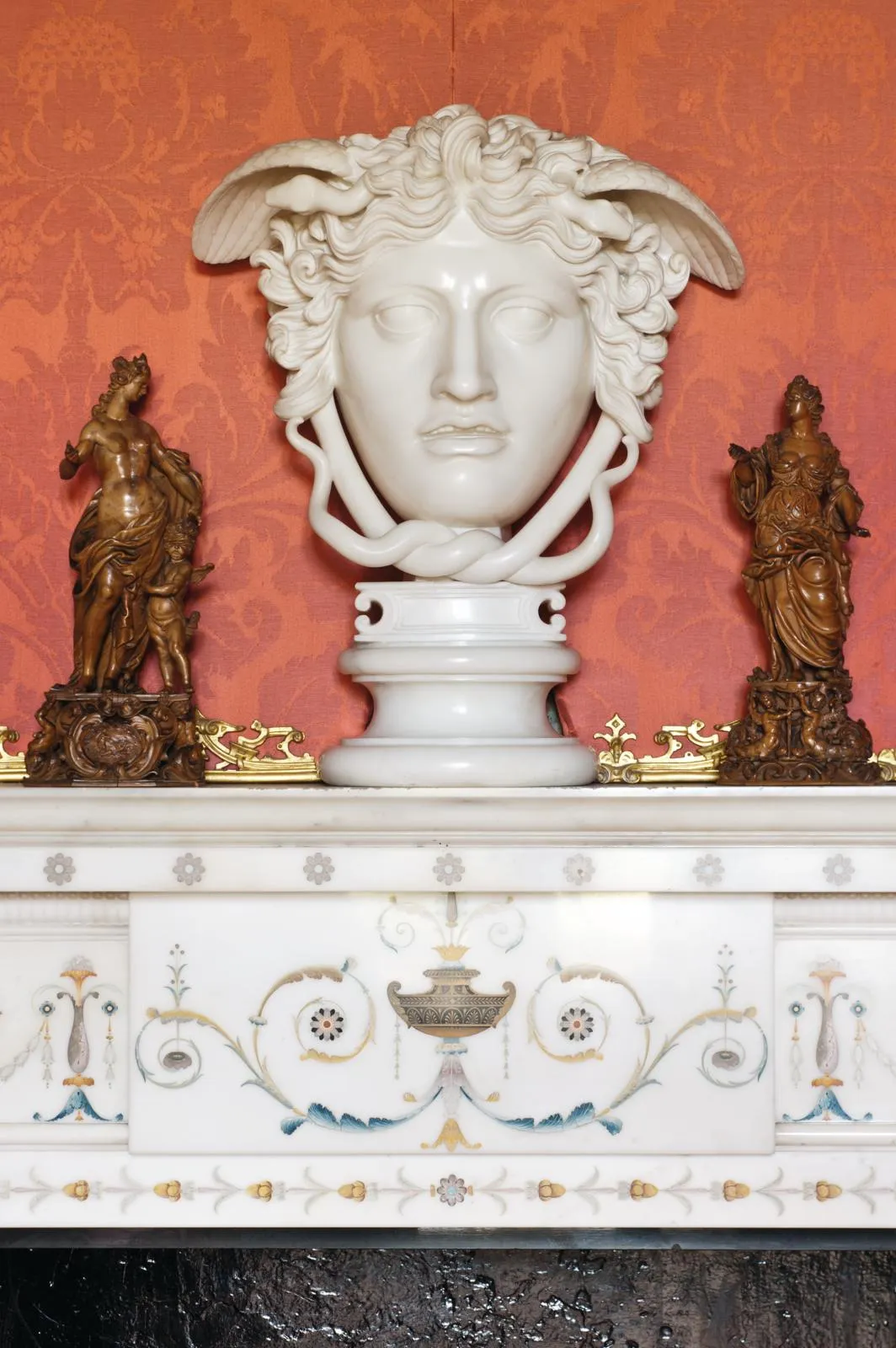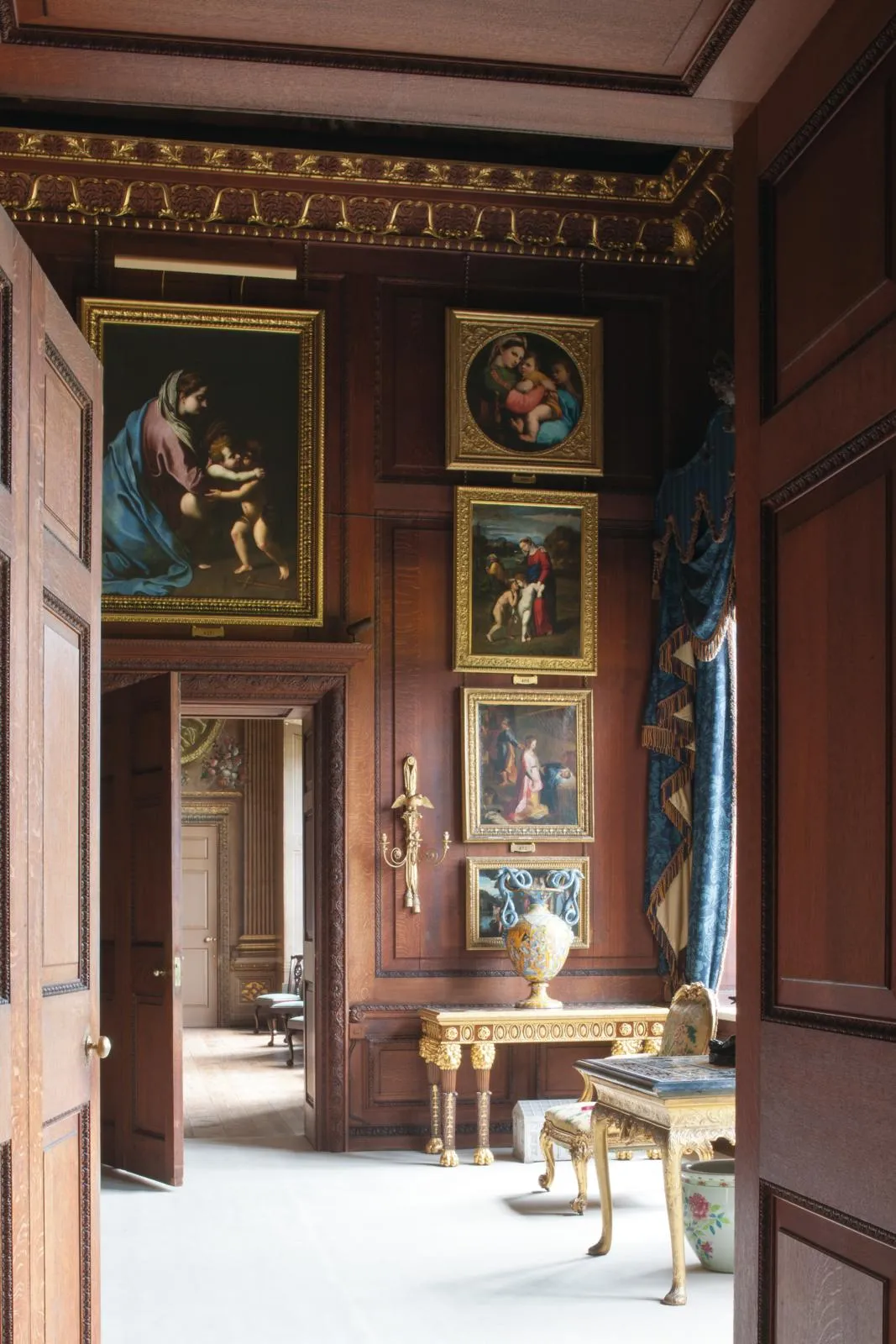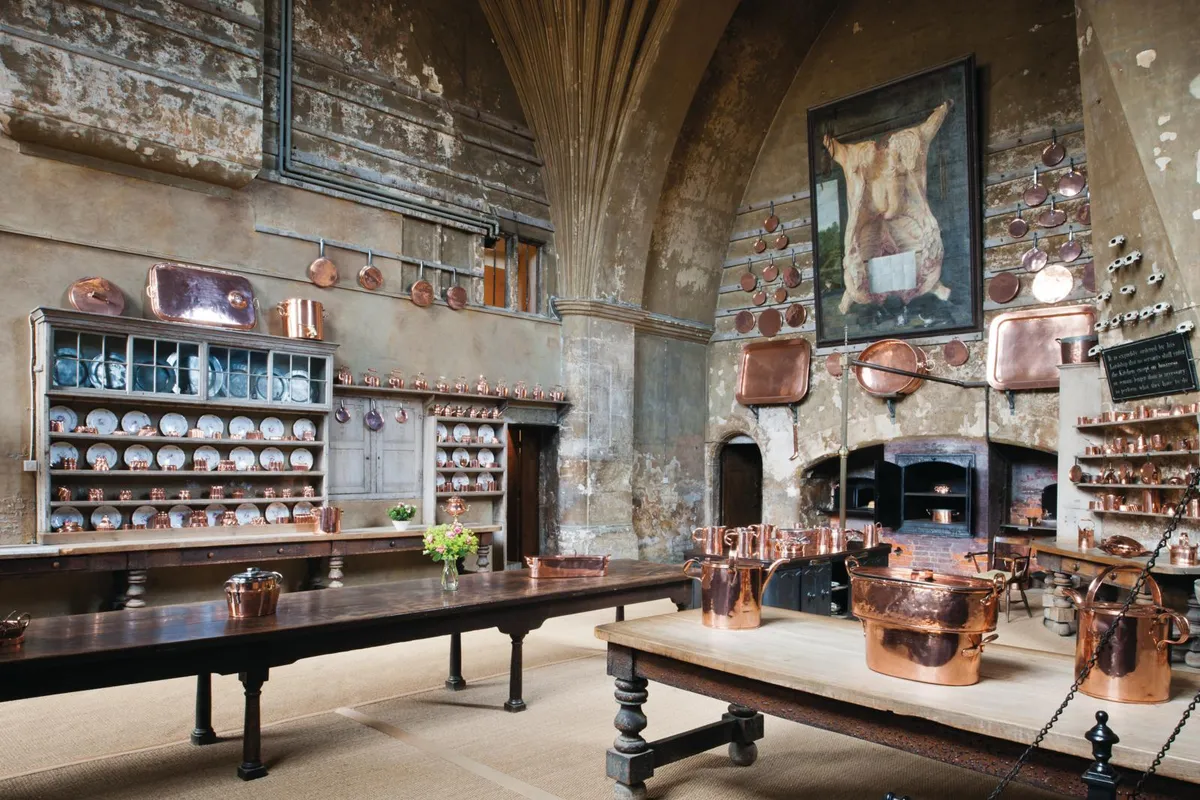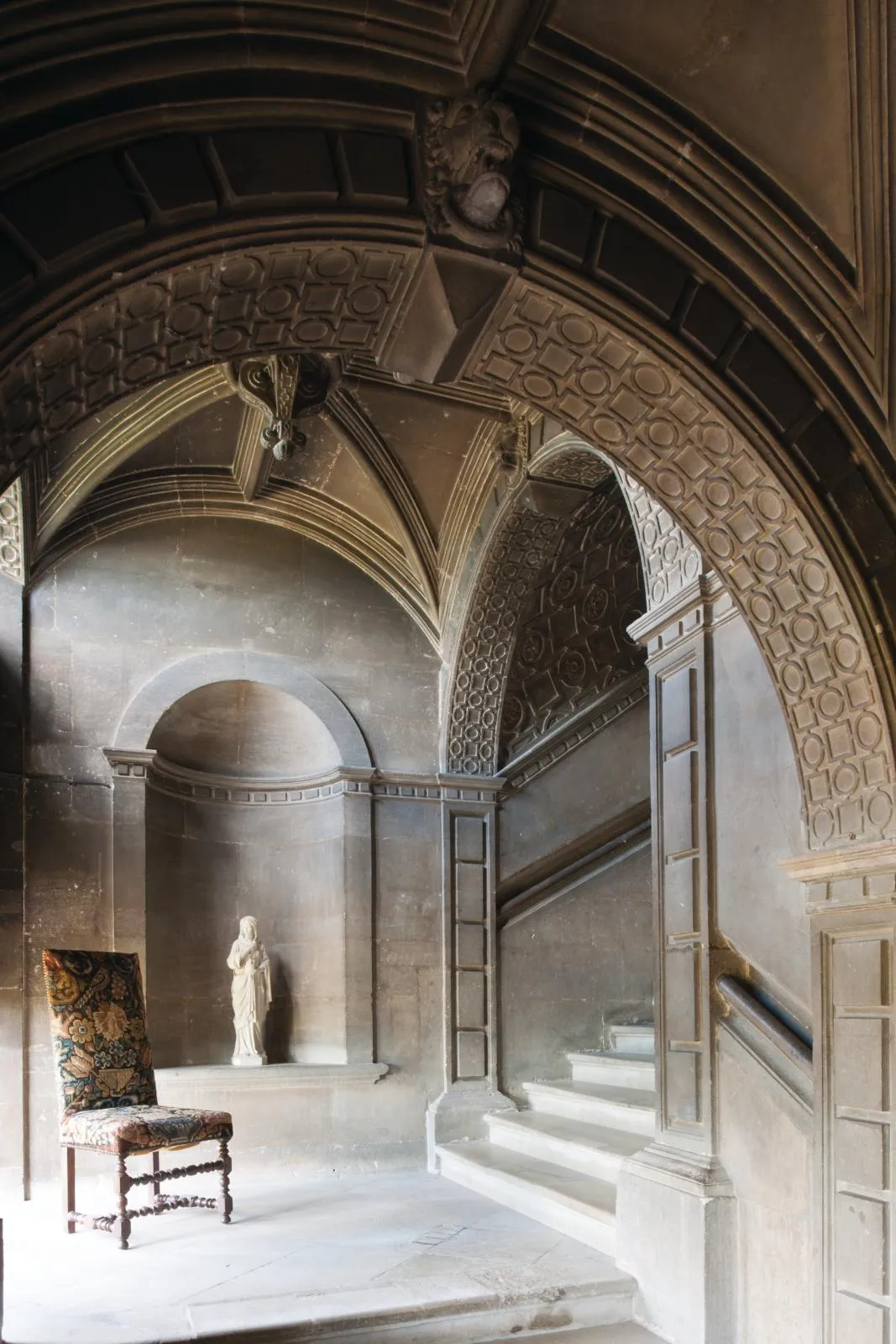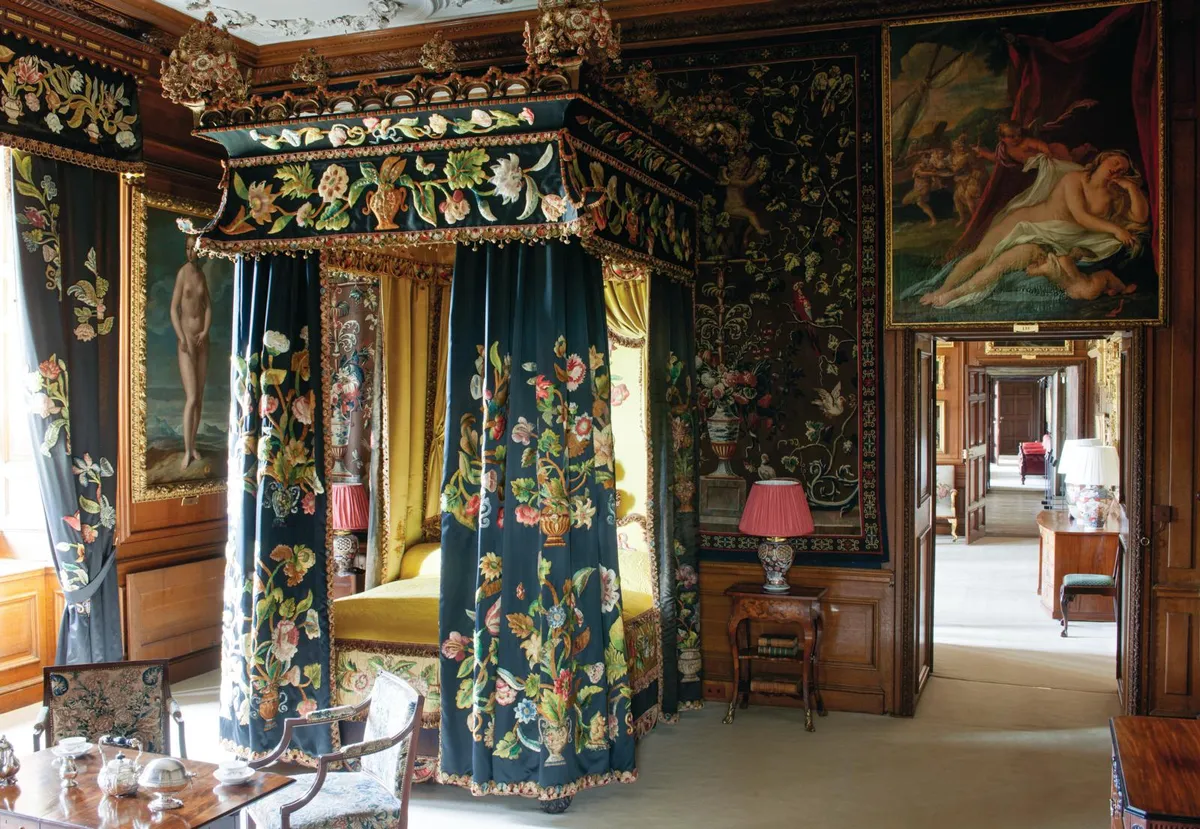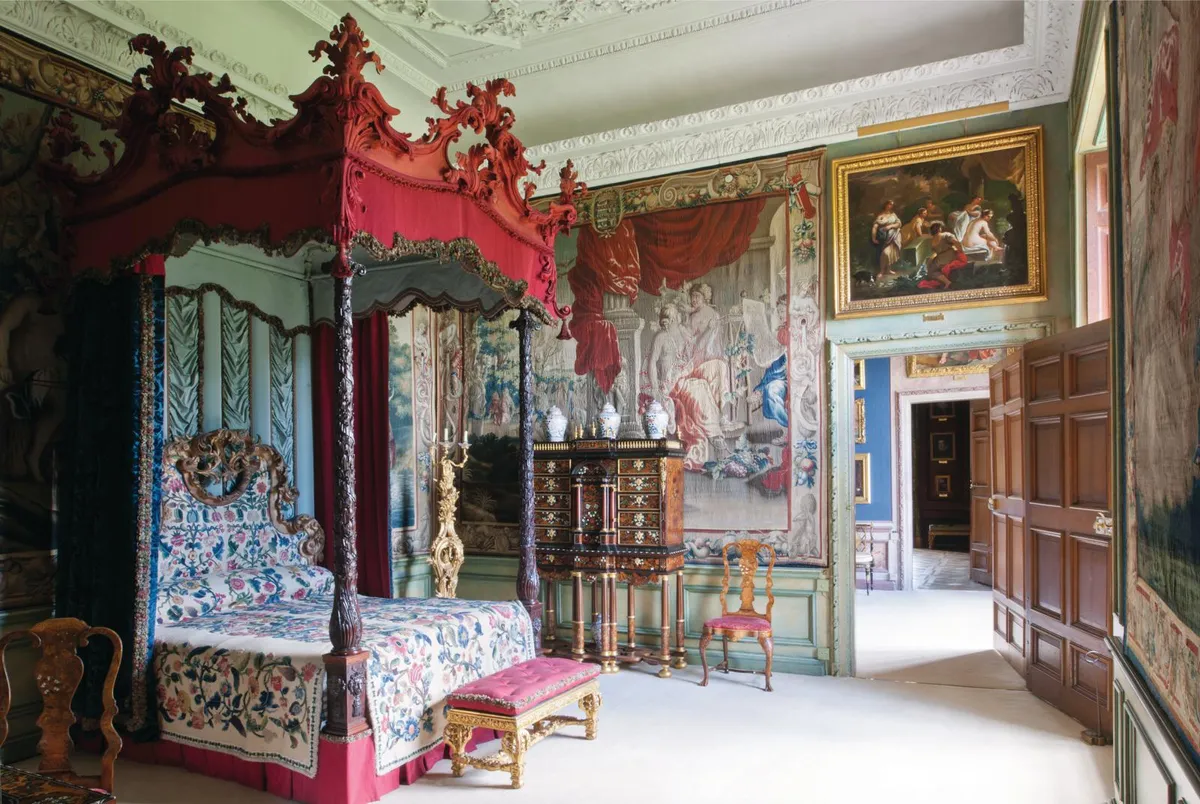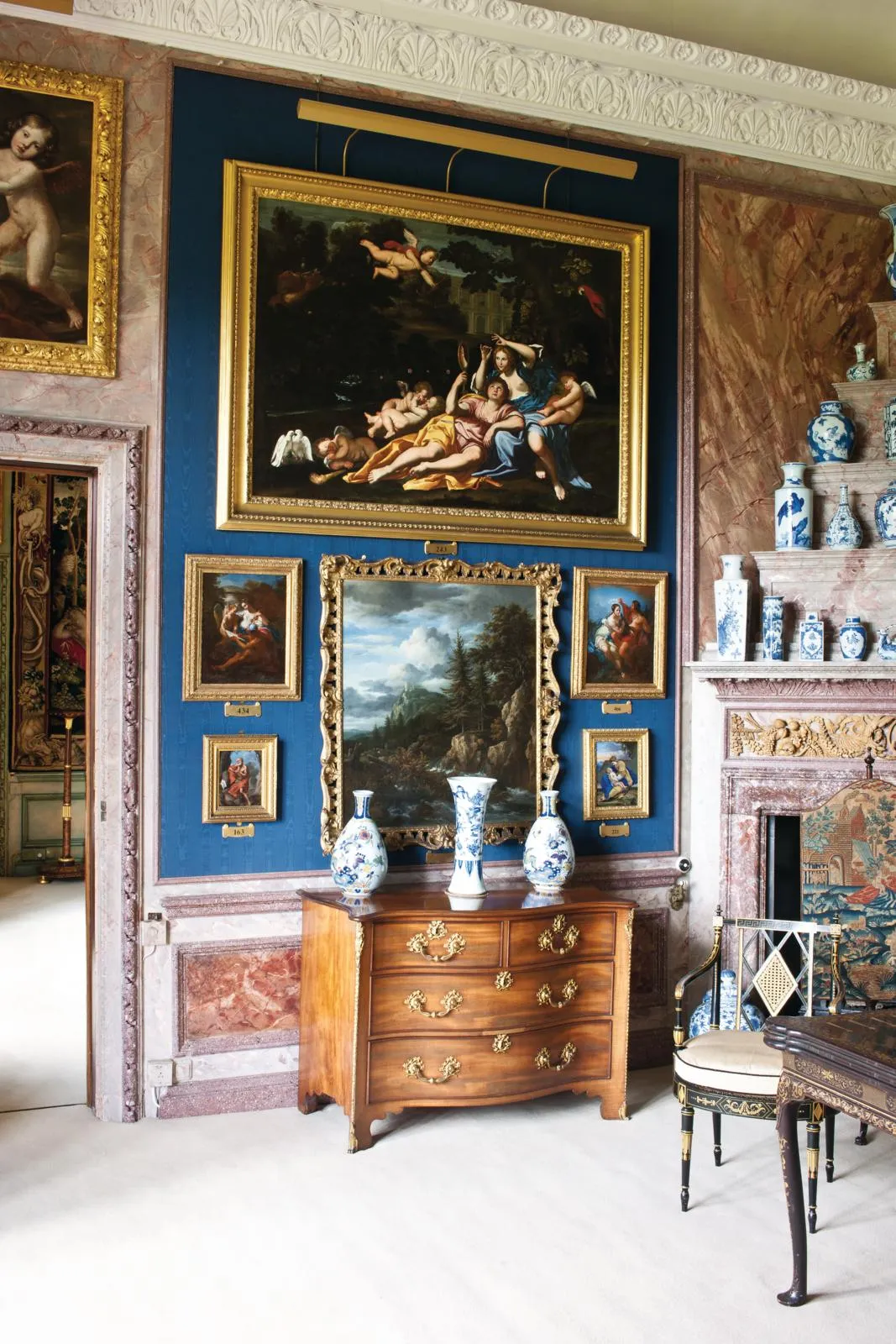Burghley’s myriad pinnacles, turrets and soaring central obelisk dominate the flat Lincolnshire parkland surrounding it, in much the same way that its creator, William Cecil, 1st Lord Burghley, once presided over Queen Elizabeth I’s court. A man of colossal energy and ambition, Lord Burghley was treasurer to the queen, and one of her most trusted and important advisors.
Much of Burghley was built in the decades after the young queen’s accession in 1558, with Lord Burghley probably acting as his own architect. As a man of substance, he intended his home to serve as a reminder to the world at large of his excellent taste, vast wealth and great influence.
Five hundred years on, no one can question the success of his ambition. The Cecil dynasty thrives, and Burghley remains resplendent: one of England’s largest and grandest Elizabethan treasure houses, and yet still at the heart of the Cecil family’s life.
You might also like take a tour of Port Eliot in Cornwall
These days Miranda Rock, a sixteenth-generation descendant, is Burghley’s custodian, living in a wing of the house with her four children and her husband Orlando Rock, Christie’s UK chairman, and a specialist in decorative arts. Miranda’s love of Burghley was seeded at an early age.
She recalls visits to her grandparents as magical experiences, ‘rushing around in go-carts and making fantastic camps from wicker chairs in a garden room that had a floor of artificial grass and two floral swing seats on each side of an exquisite marble fireplace.’
This is not to say living in such a house was without drawbacks. The family moved into Burghley when Miranda was 11 years old, and her mother, Lady Victoria Leatham, took over the running of the house. ‘It was exciting but sometimes intimidating as a child – at night our parents were 72 stairs away, we were at the top of the house and they were at the bottom.’
But from the first, Miranda was enthralled by Burghley’s treasures. ‘Opening boxes, and being allowed by a paint conservator to go up a ladder and clean a tiny square of Verrio’s Heaven ceiling – it was impossible not to be affected, and I remember thinking these things were really special.’
You might also like inside Burton Constable Hall
To Miranda, Burghley’s sumptuous interiors owe much to the contribution of two ancestors. In the 17th century, John Cecil, 5th Earl of Exeter (1648–1700) made his indelible mark on the collections thanks to his marriage to Anne Cavendish, daughter of the Earl of Devonshire, an heiress who shared his insatiable appetite for art and travel.
On trips to France and Italy, they bought more than 300 paintings, commissioned tapestries and furniture, and were presented with magnificent treasures: a pietra dura cabinet in the Fourth George Room was a gift from Archduke Cosimo III of Tuscany.
They also enlisted leading baroque artists such as Louis Laguerre and Antonio Verrio to come to Burghley and embellish it. Laguerre, a godson of Louis XIV, painted vast scenes from Cleopatra’s life on the walls of the Bow Room. Verrio was responsible for the fearsome Hell Staircase and its dazzling counterpart, the Heaven Room, as well as ceilings in the George Rooms.
However, Verrio’s artistic temperament did not fit easily into life in Lincolnshire. Burghley’s extensive records show him to have been a disruptive character, who upset the female servants and quarrelled with almost everyone in the household.
Brownlow, the 9th Earl (1725–1793) was also an energetic collector, furnishing the George Rooms with neoclassical furniture, much of it supplied by London cabinetmakers Mayhew and Ince. Like his great-grandfather, he too was a keen collector of Italian paintings.
In the Blue Silk Dressing Room hangs The Virgin and Child by Orazio Gentileschi. The painting was once owned by Pope Clement XIV, but the 9th Earl persuaded him to swap it for a telescope.
You might also like a Lord & Lady's Georgian mansion in Perthshire
Miranda’s favourite painting, The Adoration of the Magi by Jacopo Bassano, was also bought by the 9th Earl in Venice, and now hangs in her drawing room. ‘There’s a note in his diary that mentions the painting as being precariously transported at night by gondola. For me, that only adds to its romance,’ she says.
Miranda is intrigued by the women who have always played a key role in Burghley’s life. For instance, it was thanks to Hannah Sophia, wife of the 8th Earl, that the largest wine cooler in existence (by Philip Rollos and weighing more than 230 pounds) could be paid for.
‘I would love to find out more about the women because, as I know, it falls to them to keep a household like this running smoothly, but the archives are patchy,’ says Miranda.
You might also like inside Highclere Castle
Even so, it was in the archives, not long after Miranda’s family moved to Burghley, that her mother made an extraordinary discovery. ‘She opened a small vellum-covered notebook and started to read. It was an overlooked inventory written in a beautiful hand by the 5th Earl’s secretary, and dated 1688.
It listed the contents of all the rooms in the house, from mattresses in the maids’ rooms to tapestries and paintings in the Earl’s bedroom. But my mother only realised the significance of what she’d stumbled upon when she came to a page that listed ‘Two China Boys Wrestling’, and worked out the description related to a Kakiemon figurine of a pair of sumo wrestlers.’
The 1688 inventory established the Burghley collection as the earliest documented Japanese ceramics outside the Far East, and therefore of international historic importance. ‘It was an extraordinary breakthrough. Until then no one really understood why this Japanese porcelain was here or where it came from. And it was amazing the figure had survived, because my grandfather used it as a doorstop!’
